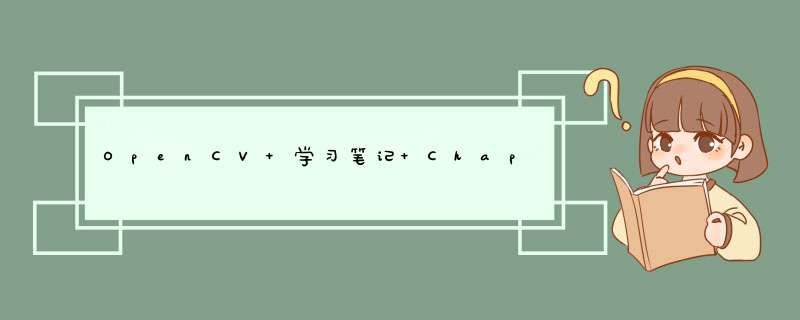
Compile with cmake
In case to compile mat.cpp, write CMakeLists.txt :
cmake_minimum_required(VERSION 2.8)
project( mat )
find_package( OpenCV REQUIRED )
include_directories( ${OpenCV_INCLUDE_DIRS} )
add_executable( mat mat.cpp )
target_link_libraries( mat ${OpenCV_LIBS} )
Then generate Makefile and make:
cmake . makeWays to initialize Mat object
- Initialize a header (pointer) to Mat object:
#include#include using namespace cv; int main() { Mat a; std::cout << a; return 0; }
output:
[]
- Initialize with type and size (row, col) (1):
#include#include using namespace cv; int main() { Mat a = Mat_ (3, 4); std::cout << a; return 0; }
output:
[0, 0, 0, 0; 0, 0, 0, 0; 0, 0, 0, 0]
- Initialize with type and size (2):
#include#include using namespace cv; int main() { Mat a(8, 6, CV_8UC3); std::cout << a; return 0; }
output:
- Initialize with Size struct
#include#include #include using namespace cv; int main() { Size size(3, 4); Mat a(size, CV_8UC3); std::cout << a; return 0; }
output:
- Initialize with specific value / mode
#include#include #include using namespace cv; int main() { Mat a = Mat::ones(3, 2, CV_8U); std::cout << a; return 0; }
output:
Similar to numpy, there are
Mat::ones Mat::zeros ...
- Initialize with values from array
#include#include #include using namespace cv; int main() { float arr[8]; for (int i = 0; i < 8; i++) { arr[i] = float(i) / 10; } Mat a(2, 3, CV_32F, arr); Mat b(3, 4, CV_32F, arr); std::cout << a << std::endl << b; return 0; }
output :
#include#include #include using namespace cv; int main() { Size size(3, 4); Mat a(size, CV_8UC1); Mat b(a); a.at (0, 0) = 1; std::cout << a << std::endl; std::cout << b; return 0; }
output:
#include#include #include using namespace cv; int main() { Size size(3, 4); Mat a(size, CV_8UC1); Mat b = a.clone(); a.at (0, 0) = 1; std::cout << a << std::endl; std::cout << b; return 0; }
output:
欢迎分享,转载请注明来源:内存溢出

 微信扫一扫
微信扫一扫
 支付宝扫一扫
支付宝扫一扫
评论列表(0条)